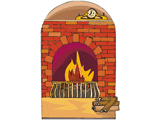After the revolution of 1905-07 the number of girls getting secondary and professional education increased, however the majority of women stayed illiterate
Well, no wonder Chechov didn't spend time portraying on Anna's situration!
Here's another of Chechov's short stories you might find interesting - he portrays with sensitivity - a young working woman, a governess in
An Upheaval This is very short, but I'd love to hear what you think of his purpose in protecting the marriage of the lady of the house - who would divorce him if she learned what he had done...
